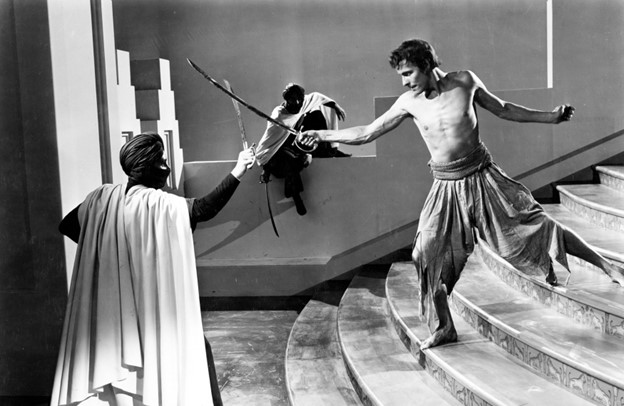The Thief of Bagdad (1924)
Raoul Walsh's "The Thief of Bagdad"
After starting his career as an actor with D.W. Griffith, Raoul Walsh acted as an assistant director (as well as playing John Wilkes Booth) in "The Birth of a Nation." He even directed his own feature-length film in the same year, "Regeneration," often cited as the first 'gangster film.' After serving as an American officer in World War I, Walsh made his way back to Hollywood. His first explosive film was 1924's "The Thief of Bagdad." Produced by Douglas Fairbanks, the film was a vehicle for Fairbanks to continue with his signature 'swashbuckling' action and stuntwork, after just coming off the success of 1922's "Robin Hood."
The film is adapted from a story contained in the Arabic folk book "One Thousand and One Nights," often referred to in the Western world as "Arabian Nights." It tells the story of a common thief in the city of Bagdad. After seeing the Princess of Bagdad, the thief sneaks into the castle to visit her. Mistaking the thief, named Ahmed, for a visiting prince, the Princess chooses him to be her future husband. After discovering him to be a common thief, the Caliph sends tells her suitors that whoever brings her the most valuable fortune will be her future husband. The various suitors bring various items from far and wide, like a magic carpet and a magic apple. However, Ahmed goes to great lengths (and swashbuckling adventures) to capture a 'magic powder' that grants him whatever he wishes for. After returning to the city, he discovers a Mongol lord has overtaken the city with the Princess captured. Ahmed summons an army with his magic powder and takes back the city and rescues the Princess in the process.
"The Theif of Bagdad" is one of the most expensive films made in the 1920s with an estimated budget of over $1 million. The great costs went into the lavish sets and production designs that were meant to replicate the mighty city of Bagdad. It also went into the special effects for the film; effects that were extravagant for 1924. These effects included a magic levitating rope, a flying horse, an invisibility cloak, and a flying carpet.
The film was very entertaining for American audiences, as it was an entirely visual and adventurous spectacle. It helped establish Raoul Walsh and a director capable of large-scale productions and furthered Douglas Fairbanks' image as a action star.




Comments
Post a Comment